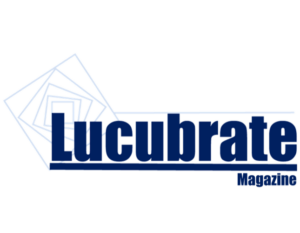[This post has already been read 1305 times!]
When teachers work together to improve their practice, students learn more. This simple yet powerful idea is at the heart of effective schools. Collaboration builds collective responsibility for constantly improving teaching practice and so student learning. The challenge for teachers and schools is to develop a shared understanding of what excellent practice looks like. While it will not look exactly the same in every Classroom, some instructional practices that evidence suggests work well in most.
The above statements, you can read in a document published by the Department of Education and Training Melbourne. [1] The report gives ten practices that may increase student learning. These practices or strategies are:
- Setting Goals
- Structuring Lessons
- Explicit Teaching
- Worked Examples
- Collaborative Learning
- Multiple Exposures
- Questioning
- Feedback
- Metacognitive Strategies
- Differentiated Teaching
Al those strategies listed might be essential in the classrooms. We will highlight one of those. That is Metacognitive strategies.
Metacognitive strategies
Metacognition goes beyond simply pondering the idea of thinking. It requires learners to “externalize mental events” [2]. Metacognition examines what is needed to accomplish a specific learning outcome. In addition to developing thinking strategies, learners must have a “critical awareness” of themselves and the task at hand. Thinkers must consider their strengths and weaknesses and develop strategies to compensate for any areas of need.
The term metacognition refers to an individual’s ability to plan, monitor, evaluate, and make changes to their own learning behaviours to confront challenges more effectively. Metacognitive strategies empower students to think about their own thinking. Metacognitive activities can include
- planning how to approach learning tasks
- identifying appropriate methods to complete a task
- evaluating progress
- monitoring comprehension.
Metacognition has the power to improve pupil outcomes by encouraging more profound thinking. It helps to develop and deepen students’ subject knowledge. This is because Metacognition should enable pupils to think more cohesively about the subject content. Such as making connections between content or applying old information in new contexts.
It also develops their ability to think critically, an essential skill in the 21st century. This is more important than ever in an era of fake news and unreliable content!
Why use Metacognition in the Classroom?
Supporting the development of Metacognition is a powerful way to promote student success in college. Students with solid metacognitive skills are positioned to learn more and perform better than peers who are still developing their Metacognition. Students with well-developed Metacognition can identify concepts they do not understand and select appropriate strategies for learning those concepts. They know how to implement their chosen method and carry out their overall study plans. They can evaluate their system and adjust their plans based on outcomes. Metacognition allows students to be more expert-like in their thinking and more effective and efficient in their learning. [3]
In an article from 2020, Elisabeth Norman discusses why Metacognition is not always helpful [4]. Norman points out that actively engaging in Metacognition may improve cognitive achievement and subjective well-being in many situations. However, metacognitive engagement’s potential disadvantages are rarely communicated in metacognition research. The article shows three ways where Metacognition may not be the best:
- Metacognition may sometimes actively interfere with task performance.
- The costs of engaging in metacognitive strategies may, under certain circumstances, outweigh its benefits.
- Metacognitive judgments or feelings involving a negative self-evaluation may detract from psychological well-being.
The article concludes that Metacognition is a normal part of cognitive functioning. Metacognition implies something more than experiencing naturally occurring metacognitive activity. We cannot choose to “be metacognitive” or not. However, we can choose whether to apply specific metacognitive strategies. We can choose to use particular feelings. Or reflect upon metacognitive knowledge. An increased focus on Metacognition could be related to the more general therapeutic self-help culture, and the author claims consistent with critical perspectives to this trend.
Norman has shown that Metacognition can be unhelpful in at least three ways. Correspondingly, before encouraging someone to engage in Metacognition, it is relevant to consider the following three questions:
- Is the nature of the task such that Metacognition could interfere with performance?
- Is the cognitive demand required by the metacognitive strategy disproportionally large compared to its potential usefulness to cognitive achievement?
- Does Metacognition lead to an unhelpful comparison of oneself to others?
Norman concludes that if the answer to any of these is yes, Metacognition might be more unhelpful than helpful.[4]
References
[1] High Impact Teaching Strategies, Excellence in teaching and learning, the Department of Education and Training, East Melbourne, Victoria, 2020. [2] John D. Bransford, Ann L. Brown, and Rodney R. Cocking, How People Learn Brain, Mind, Experience, and School, 2000 [3] Julie Dangremond Stanton, Amanda J. Sebesta, and John Dunlosky Fostering Metacognition to Support Student Learning and Performance,CBE—Life Sciences Education 2021 20:2
[4] Norman Elisabeth, Why Metacognition Is Not Always Helpful, Frontiers in Psychology, VOLUME 11, 2020Lucubrate Magazine January 2022
The photo on the top of the article: Adobe Stock

Views: 444





